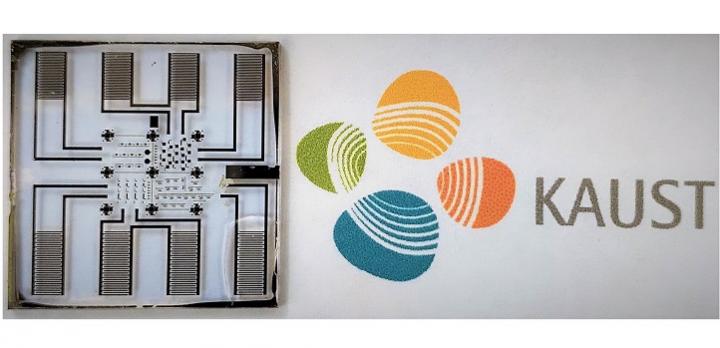The ability to combine many functions into a single microchip is a significant advance in the quest to perfect the tiny, self-powered sensors that will expand the Internet of things. KAUST researchers have managed to combine sensing, energy-harvesting, current-rectifying and energy-storage functions into a single microchip.

“Previously, researchers had to use bulky rectifiers that converted intermittent harvested electrical energy into steady direct current for storage in electrochemical microsupercapacitors,” says Mrinal K. Hota, research scientist at KAUST and lead author of the study.
Hota explains that the key to integrating everything into a single chip was the development of ruthenium oxide (RuO2) as the common electrode material connecting all devices in the microcircuits. The team envisages a broad range of applications from monitoring personal health indications directly from the human body to environmental and industrial sensing.
“Our achievement simplifies device fabrication and realizes significant miniaturization of self-powered sensor devices,” says project leader Husam Alshareef.
The ruthenium-oxide contacts are laid onto a glass or silicon substrate to connect sensing, energy-harvesting and current-rectifying electronics with one or more electrochemical microsupercapacitors that store the electrical energy. This creates a tiny system that can operate without any battery power. Instead it uses available body movement or machinery vibrations as the reliable and continual source of energy.
“Unlike a battery, electrochemical microsupercapacitors can last for hundreds of thousands of cycles rather than just a few thousand,” Hota points out. They can also deliver a significantly higher power output from a given volume.
A key to creating electrode material suitable for connecting all devices was to make optimal ruthenium-dioxide surfaces with controlled roughness, defects and conductivity. These features enabled the team to use RuO2 for both electronics and electrochemical microsupercapacitors.
Another crucial innovation was to use a gel that, after application, solidifies into the supercapacitors’ electrolyte. This is a material that transports electric charge in the form of ions. The solidified gel was chosen to avoid any damage to rectifiers and thin-film transistors.
The researchers now plan to work to optimize the RuO2 electrodes further and explore linking many different types of sensors into their chips. They also want to investigate adding wireless communication into the device. This would allow biosensors and environmental sensors to send data remotely to any wireless receivers, including mobile phones and personal computers.